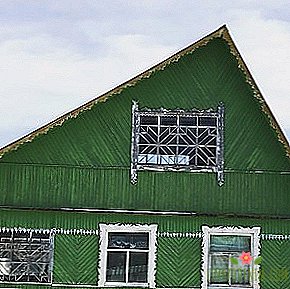"Children's" drawings on clothes: The fashion response to overconsumption
Speaking of ironic prints, It's hard not to mention brands like Vetements, Balenciaga, Off-White or Supreme. They, like no one else, convey the spirit of the time, borrowing and rethinking cultural codes. Photos of rock and pop stars, logos of commercial companies, inscriptions on the topic of the day - today these universal symbols are understandable to audiences of any age and wealth. However, among fashion experts, disputes do not subside, what are the goals pursued by brands: to acquaint their admirers with an unfamiliar culture or to play on general nostalgia?

The value of prints
History remembers a similar case. In the era of pop art, artists portrayed heroes of the time like Marilyn Monroe and Elvis Presley, mass-produced items, newspaper and comic strip clippings. So they spoke to the audience in the language of bright posters and advertisements that swept half the world in the post-war period — at the same time the artistic images began to be transferred to clothing.
For example, paper dresses that companies sold for one or two dollars as an advertisement for their main product. So, in 1966, they even sewed a dress based on Andy Warhol's work depicting Campbell's soup cans. And even US President Richard Nixon released his own paper merchandise. And although the manufacturers at first took their invention seriously, such clothes suddenly became popular: a paper dress could be thrown away without regret.


Yves Saint Laurent often quoted artists: here is a dress based on the works of Tom Wesselman, but on the drawing of Georges Braque. In 1983, Vivienne Westwood dedicated an entire collection to Kit Haring, and in the 90s Gianni Versace created several things with pop-up prints.
Despite the fact that the 90s are associated in the mass consciousness primarily with minimalism and monochrome, the variety of prints in this period was more than ever. Here and leopard print as a synonym for luxury, and floral - as a tribute to grunge and fashion for "vintage dresses" as if from the attic. The 2000s are remembered mainly because of the variety of logos and ostentatious wealth, including because of the dominance of r'n'b-aesthetics.
Now, during the rethinking and borrowing, it is prints that do not give rest to designers. The last show Vetements expectedly caused a discussion: in particular, the attention was attracted by transparent tattoo jackets, which depict churches with domes, and hoodie with provocative inscriptions, including in Russian. Each generation of designers will somehow appeal to their youth, and the younger generation of consumers will meet it with a bang - and this will also be reflected in prints.


Trend for new sincerity
Back in the 80s and 90s, designers flirted with the idea that clothes should communicate something to the world around them, literally carry the message. Here is a Dolce & Gabbana outfit with speaking inscriptions, but Moschino listed all possible brands on only one dress. But while some are putting important messages into the inscriptions, others are ironic - their “statements” can mean absolutely nothing.
Now more and more often illustrations are placed on clothes, as if drawn by hand directly on the fabric; print on things and old photos that designers seem to have taken from the personal archive. In the era of consumption, “real” images become the answer to mass character: infantile prints, sometimes deliberately simple, and it is easy to repeat themselves - inevitably I recall Angelina Jolie, whose wedding dress Versace was painted by children. From recent examples - a vetements pencil shirt or a bright Supreme windbreaker.
The general course on infantile and ironic drawings is not accidental. Fashion and society as a whole have shifted to the consumption of experience and positive emotions. In such a coordinate system, "homemade" things turn out to be much more valuable than the same goods. This was already realized, for example, by Kanye West, who, in the framework of the new collection, presented hand-painted longsliv.
Designer and artist Patrick Church admits that he does not think about the audience when he creates another illustration. Inspiration for him is sex, which is reflected in almost every work of his. Many designers touch upon provocative themes, such as drugs and violence, that are not shown in advertising, but which remain a problem of modern society.


Who uses ironic prints
It is difficult to imagine such pictures on clothes of mass-market brands, however, this is the essence. Ironic prints should be sought from streetwear brands, which sometimes deliberately keep out of the mass fashion. You don’t need to go far for an example: remember the Russian brand of the Goldman sisters, who personally paint clothes. The artist and designer Claire Barrow also refuses to associate herself with the world of endless production: her presentation of clothes is more like performances, and she creates drawings for models herself.
Provocative and infantile drawings are used by well-known brands of street and near-street clothes. For example, in Fucking Awesome you can find hoodies with ironic photos and painted pants, while Undercover - jackets with surreal prints. It is worth paying attention to the French brand Enfants Riches Deprimes, which places on T-shirts and longsleeve emotional drawings, created as if using a pencil or marker.
Photo: Wikimedia Commons (1, 2, 3), Claire Barrow, Patrick Church





